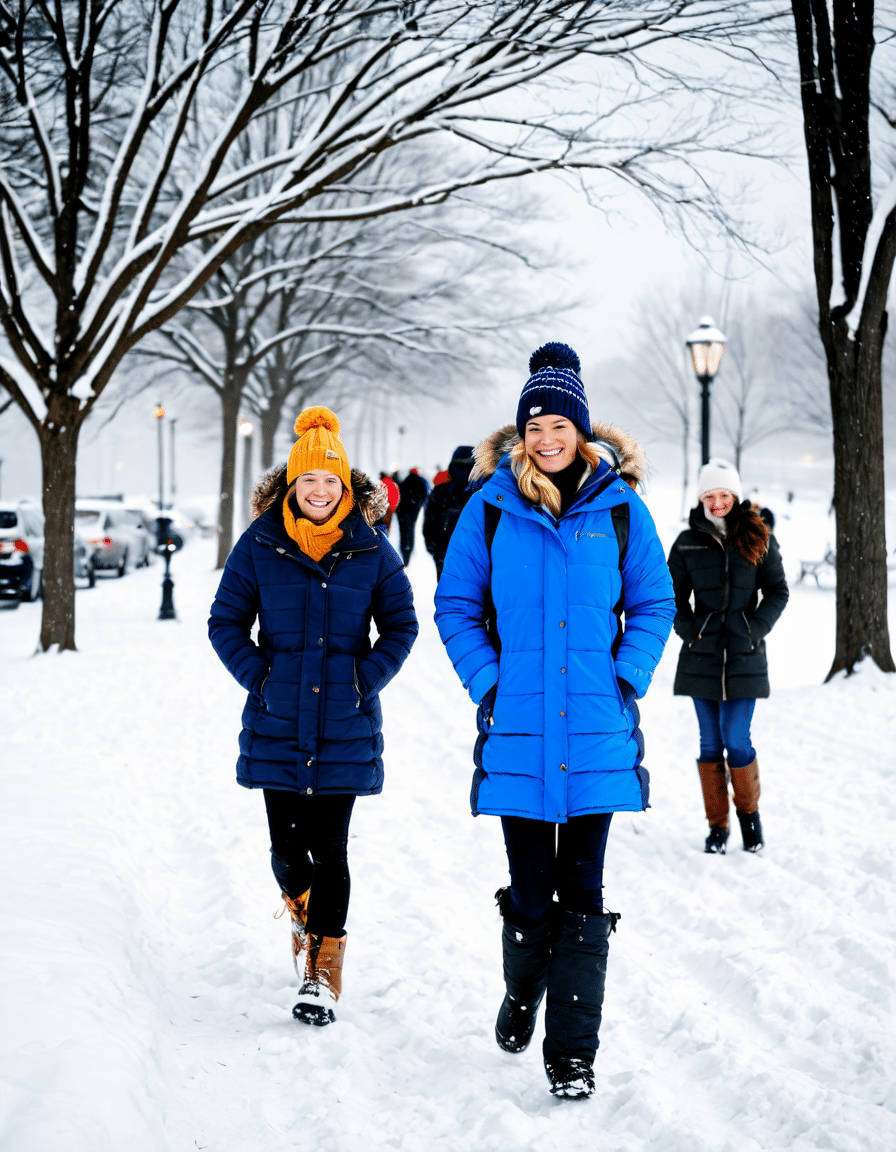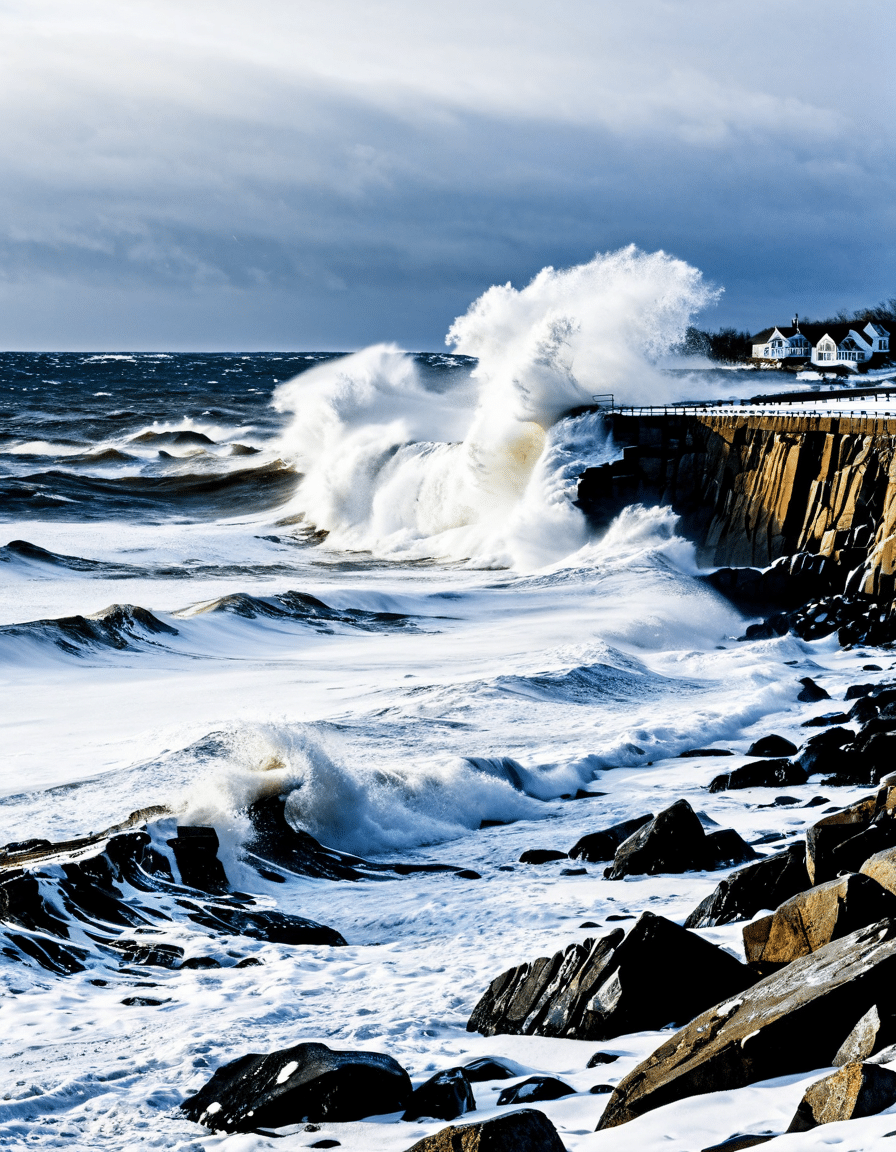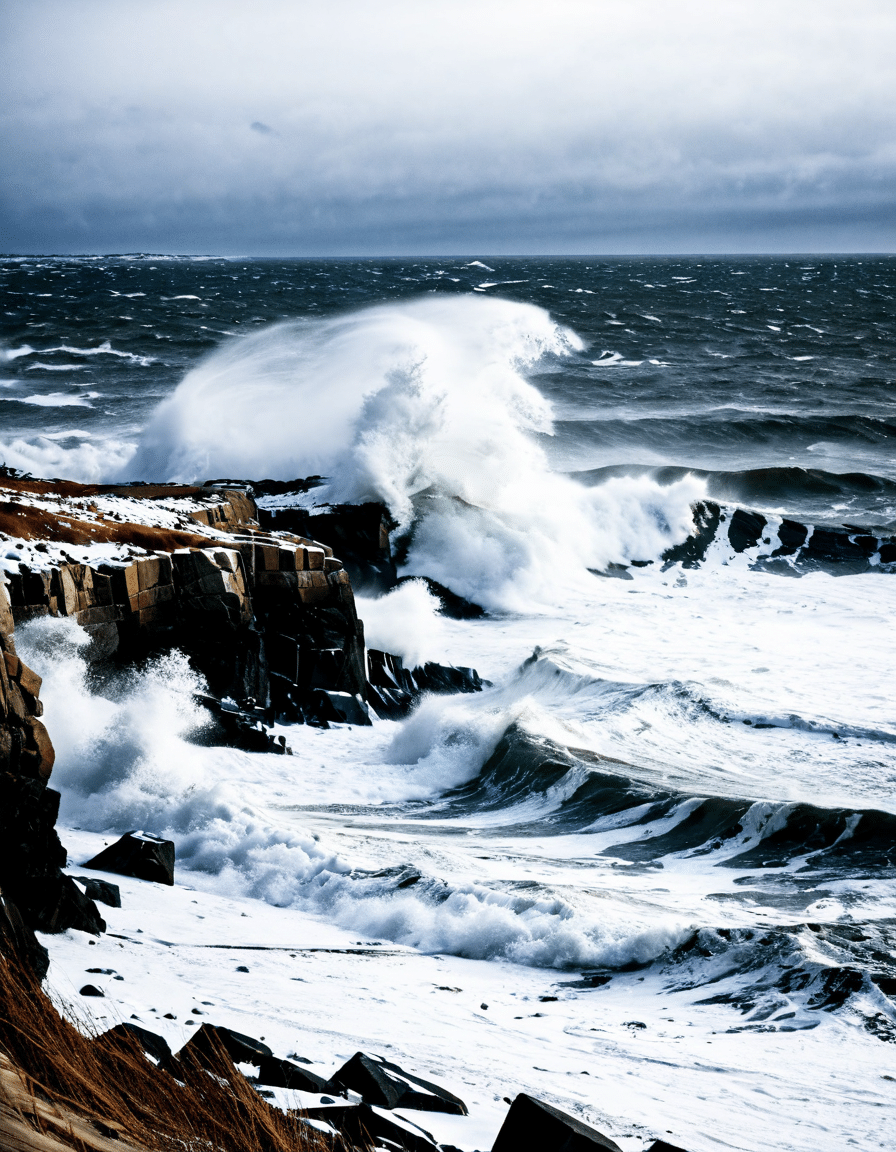When you hear about a noreaster, it often conjures images of heavy snow, powerful winds, and the chaos that comes with winter weather. Primarily affecting the northeastern United States, these fierce storms can bring everything from coastal flooding to blizzard conditions. Their formation is quite unique, as they arise from a blend of cold air masses colliding with warm, moist air from the ocean. This dynamic interaction creates significant pressure changes, leading to extreme weather events that can take communities by surprise.
Noreasters are notorious for their impact on daily life, particularly when it comes to transportation and infrastructure. School closures, public transport interruptions, and power outages become common as snow piles up and winds whip through the landscape. The storms typically develop along the East Coast, often intensified by geographic features like mountains that can direct the flow of air. Understanding how these storms work is critical for people living in affected areas, particularly those in states with a history of severe winter weather.
Top 5 Noreaster Events in Recent History
Who could forget the March 2018 bomb cyclone? It was a noreaster that made headlines across the country. With wind gusts smashing through 80 mph and snow accumulation soaring over 18 inches in some places, this storm left Massachusetts and New York in a state of emergency. Governor Andrew Cuomo had to declare a state of emergency as communities were cut off and emergency services scrambled to respond.
The Blizzard of 1978 is often considered one of the worst noreasters in history. Sweeping across the Northeast, it dumped nearly 30 inches of snow in parts of Massachusetts and left thousands stranded. The fierce winds transformed an already dire situation into a severe emergency, prompting then-Governor Michael Dukakis to declare a state of emergency. For many, this storm remains etched in memory as a symbol of nature’s power.
Fast forward to 2016, and we’ve got Winter Storm Jonas, another noreaster that shut down the East Coast in style. Washington D.C. saw a staggering 28 inches of snow, causing massive disruptions at airports and roadways. The aftereffects of Jonas took weeks to clear, as authorities raced against time to restore normalcy for stranded travelers and residents alike.
March 2021 ushered in yet another severe noreaster that wreaked havoc from Virginia to Maine. Communities in New Jersey and Maryland experienced more than 18 inches of snow, along with chilling winds that left thousands without power. The widespread outages resulting from this storm highlighted the pressing need for robust infrastructure to brave winter storms.
The transition of Hurricane Helene into a noreaster in September 2018 shows how meteorological phenomena can shift dramatically. This storm brought rain and strong winds to the northeastern U.S., raising questions about how tropical systems can morph into winter storms. Meteorologists have been left to ponder the implications of such transformations, as they hold the key to understanding future weather patterns better.

Climate Change and Noreaster Intensity: The Role of Beshear Policies
As we stand at the crossroads of climate change and severe weather, discussions about the increasing intensity of noreasters are more relevant than ever. Kentucky Governor Andy Beshear has pushed for initiatives that emphasize community resilience and preparedness in the face of these violent storms. His administration’s proactive stance on infrastructure and emergency planning reflects a growing recognition that noreasters are not just seasonal occurrences, but phenomena that can define entire locales.
Beshear’s policies aim to forge a comprehensive approach to tackling climate-related challenges. Engaging local governments and communities in these discussions is critical for developing strategies that mitigate flooding risks and better control storm damage. The collaboration of various stakeholders can guide effective responses and tailor emergency protocols that align with the increasing storm frequency seen in recent years.
Moreover, storm-related policies not only improve resilience but can also strengthen local economies by ensuring that communities are equipped to handle unexpected challenges. Awareness, preparedness, and an acknowledgment of climate change are keys to effectively dealing with the impacts of noreasters, making it imperative for leaders like Beshear to lead the charge.
The Digital Age of Noreaster Tracking: Streameast and Data Utilization
The way we track noreasters has evolved dramatically with advancements in technology. Platforms like Streameast now allow anyone to access real-time data on storm paths and intensities, which empowers communities to act swiftly and urgently during severe weather events. This accessibility to information means that residents can make informed decisions about whether to evacuate or stay put.
Data utilization has enhanced our understanding of how noreasters form and move. Meteorologists now rely on an array of sophisticated models and tracking tools to predict these storms with greater accuracy. This shift toward a more data-driven approach helps emergency planners allocate resources effectively, targeting key areas for relief and recovery efforts.
The impact of this real-time tracking extends beyond immediate responses; it fosters a culture of preparedness. As communities become equipped with knowledge about potential storms, they can initiate preventive measures that save lives and reduce damage. Policymakers leveraging this technology can formulate effective emergency protocols that meet the complex demands posed by winter storms.

Wrap-Up: Weathering the Storm
As ceremonies of winter storms like noreasters continue to be a formidable force across the Eastern United States, understanding their nuances becomes more critical. The interplay between climate change and severe weather patterns should not be overlooked, as these storms can disrupt lives and challenge existing infrastructures. These discussions about noreasters and their impacts are vital in a world facing unpredictable climate extremes.
Through innovative technologies and proactive leadership, communities can rise to face these storms with informed determination. Navigating these emerging challenges will require a united effort from meteorologists, policymakers, and the public. Being aware of potential threats and prepared to respond will play key roles in weathering the storm, emphasizing that preparedness can make all the difference when a fierce noreaster strikes.
Noreaster: Fun Facts and Trivia
The Nature of Noreasters
Noreasters, those tempestuous winter storms that sweep up the East Coast of the United States, can pack quite a punch! These weather phenomena typically form over the Atlantic Ocean, driven by low-pressure systems and the cold air masses from Canada. Did you know that the winds from a noreaster can be strong enough to send memes flying across social media? You might just find yourself laughing at a Biden meme while the world outside is a winter wonderland.
Famous Noreaster Moments
Throughout history, noreasters have made their mark, with some storms causing noteworthy disruptions. The infamous “Blizzard of ’78” stands out as one of the most remarkable, dumping over 27 inches of snow in just 24 hours in some areas! Alongside snowfall, these storms have a way of transforming entertainment too. People often cozy up indoors, catching up on shows like maid or exploring the latest buzz in showbiz, which can include everything from Elizabeth Perkins Movies And TV Shows to viral trends.
Weathering the Storm
Surviving a noreaster calls for preparation! Residents in affected areas stock up on supplies, often making snow days the perfect excuse to binge-watch their favorites or even check out hot teens trend topics on social media. However, be mindful that emergencies can arise, as a wave of Snapchat extortion cases reported during storms shows how digital dangers lurk even in harsh weather. Whether you’re hunkering down or venturing out to face the winds, noreasters have a way of connecting us all through both hardship and community spirit.




